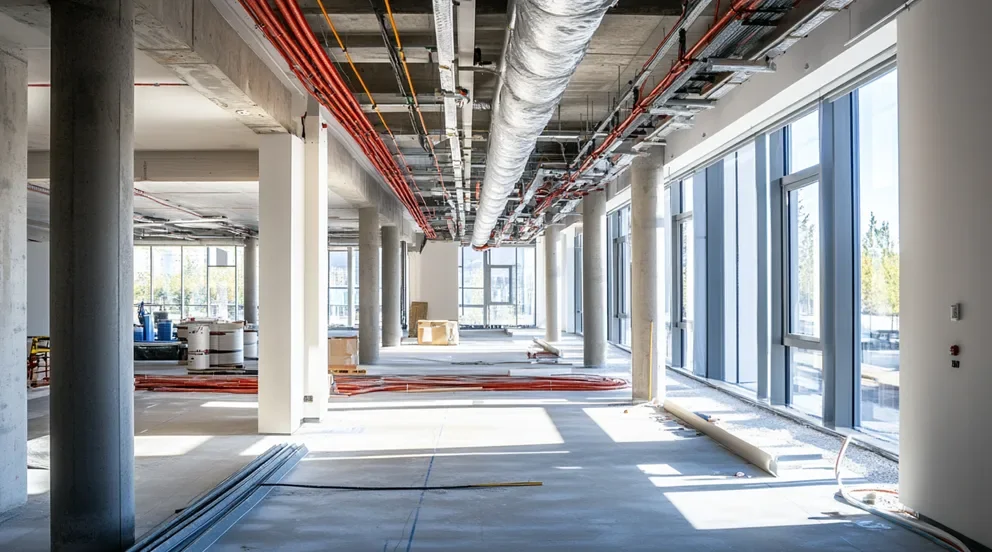HVAC Testing Equipment forms a critical subset of tools and devices designed for assessing the performance, safety, and efficiency of Heating, Ventilation, and Air Conditioning (HVAC) systems. These instruments facilitate routine diagnostics, maintenance checks, and troubleshooting efforts to ensure the optimal operation of HVAC units. Precision and accuracy guide their development, providing comprehensive solutions to system testing needs.
Among the diverse array, technicians find anemometers to measure airflow, manometers to gauge pressure, psychrometers to ascertain humidity, and temperature probes for heat monitoring. Sophisticated devices like combustion analyzers and refrigerant leak detectors are also crucial. Every piece plays a role in creating a comfortable, energy-efficient, and safe indoor environment by precisely detecting and rectifying HVAC system inefficiencies or malfunctions.
HVAC Testing Equipment is not uniform but varies significantly to cater to different system complexities and professional requirements. From simple handheld devices for field technicians to advanced systems for industrial applications, the spectrum of tools available is wide. The correct use of this equipment is pivotal to extend the lifespan of HVAC systems and optimize their performance.
Inside the intricate labyrinth of pipes, ducts, and machines that comprise HVAC systems, technicians embark on a quest for thermal comfort and air quality. With HVAC Testing Equipment as their arsenal, they’re the unsung heroes maintaining the silent heartbeat of our built environments. Today, we delve into how these tools contribute to system longevity and energy efficiency.
In an era where sustainability commands greater importance than ever, HVAC efficiencies translate to more than just user comfort—they represent considerable cost savings and reduced environmental impact. Testing equipment serves as the eyes and ears of technicians, providing tangible data that drive informed decisions. Leveraging this data leads to fine-tuning operations and innovative solutions for energy conservation.
The marriage of technology and skilled expertise through HVAC Testing Equipment offers a glimpse into future trends of HVAC maintenance. In the following article, we explore the significance of these tools and how they revolutionize our approach to managing indoor climates. An epoch where smart systems reign demands a closer look at the instruments that ensure they run smartly.
Introduction to HVAC Testing Equipment
Heating, Ventilation, and Air Conditioning (HVAC) systems are pivotal in maintaining comfort in homes and workplaces. To ensure these systems operate correctly, HVAC testing equipment is indispensable. These tools help to confirm the proper functioning of HVAC units, diagnosing issues, and verifying installation quality. Technicians rely on these instruments to measure temperature, humidity, airflow, and refrigerant levels, which are vital for system health and efficiency. By using testing equipment, professionals make informed decisions for repairs, maintenance, and optimizations.
Testing equipment ranges from simple thermometers to sophisticated diagnostic computers. Each tool is designed with precision in mind, crafted to deliver accurate readings that are crucial for meticulous HVAC work. Through the readings obtained, technicians can detect variances from the ideal operational parameters. Such variances may signal underlying issues that could, if unattended, lead to costlier damage or system failure. Therefore, these instruments are more than just tools; they are guardians of system longevity.
Proactivity is imperative in HVAC maintenance, and testing equipment provides the means. Real-time data feeds from these tools empower technicians to act swiftly, resolving potential problems before they escalate. For instance, detecting a drop in refrigerant pressure can lead to the discovery of a leak. Precise detection, enabled by testing equipment, minimizes guesswork, saves time, and ensures the repair’s accuracy. Consequently, the equipment promotes both proactive maintenance and efficient troubleshooting.
Moreover, as technology evolves, so does HVAC testing equipment, growing more sophisticated and user-friendly. Modern devices often incorporate digital interfaces, wireless connectivity, and compatibility with analysis software. Such features enhance the depth of diagnostics and the ease with which they can be conducted. This progress emboldens HVAC technicians to perform more comprehensive evaluations with greater confidence and in less time.
In summary, HVAC testing equipment is the linchpin of HVAC maintenance and repair. It bridges the gap between guesswork and precision, providing the necessary insight into system operations. As systems become more advanced, the role of testing equipment will only grow in importance, ensuring thermal comfort is provided reliably and efficiently.
Types of HVAC Testing Instruments
The assortment of HVAC testing instruments includes a variety of tools, each with a specialized purpose catered to different aspects of HVAC system evaluation. Anemometers, for example, are used to measure airflow velocity, a critical factor in assessing the efficiency of air distribution. Meanwhile, manometers gauge pressure differences within the system, indispensable for checking gas lines or verifying that air handling units operate within designed specifications. Technicians turn to such instruments for in-depth understanding and calibration.
Thermographic cameras also play a significant role in detecting thermal inconsistencies and insulation lapses. These cameras visualize temperature variations, making it easier to pinpoint areas where heat is either lost or gained unwantedly. Another set of tools, refrigerant identifiers and leak detectors, are key in maintaining the environmental and operational integrity of HVAC systems. They help safeguard against refrigerant mix-ups and ensure compliance with regulations.
Digital multimeters and clamp meters are essential for assessing electrical components within HVAC systems. They help to troubleshoot motor failures, check for proper voltage, and test electrical circuits associated with thermostats and other controls. Such precision is crucial in preventing electrical issues that could damage the system or pose safety risks. Sophisticated diagnostic instruments, called HVAC analyzers, combine a range of functions, including temperature, pressure, and humidity measurements into one device. This multipurpose nature simplifies the technician’s toolkit and streamlines the diagnostic process.
Air capture hoods and balometers are specific to measuring the volume of air coming through vents and registers. Ensuring that the correct volume of air is delivered to each space is foundational to the HVAC’s functionality. Lastly, psychrometers and hygrometers are designed to measure the relative humidity in the air, a factor critical to both comfort and the efficiency of the system. A correct humidity balance affects thermal comfort, air quality, and even energy consumption.
Each type of testing instrument plays a pivotal role, working in concert to provide a comprehensive evaluation of an HVAC system. For technicians, having access to the correct type of testing instrument isn’t just a matter of preference; it’s a necessity for ensuring systems are installed and calibrated effectively, resulting in reliable and efficient operation.
Importance of Measuring Airflow in HVAC Systems
Airflow measurement lies at the core of HVAC system functionality. It is a critical determinant of how well a system can heat or cool a space, affecting everything from comfort to energy usage. Insufficient airflow may lead to ineffective temperature control, increased strain on equipment, and higher utility bills. Conversely, excessive airflow can lead to unnecessary energy consumption and uncomfortable drafts. Hence, measuring airflow is paramount to optimizing HVAC performance.
Balanced airflow ensures that the system operates within design parameters, extending equipment lifespan and maintaining indoor air quality. Inadequate airflow could result in hot or cold spots within a space, and in extreme cases, lead to the buildup of humidity or contaminants. This imbalance can strain HVAC components as they work harder to achieve desired climates, reducing their efficiency over time. Regular airflow checks help to preemptively identify and rectify such imbalances.
Technological advancements in airflow measurement tools have allowed for more precise readings and easier interpretation of data. Anemometers, air capture hoods, and balometers are just a few instruments that provide detailed insights into airflow patterns. These tools can assess not only the quantity but also the quality of airflow, identifying potential duct leakage or blockages in the system that could be disrupting normal flow.
Furthermore, consistent airflow measurement is a key aspect of energy management. Systems with optimal airflow consume less energy, as they do not have to work as hard to maintain comfortable conditions. This efficiency translates directly into cost savings for homeowners and businesses alike. It also contributes to environmental sustainability, reducing the carbon footprint associated with HVAC operation.
To conclude, regular airflow measurement is essential for maintaining HVAC efficiency and reliability. Through the use of specialized tools and techniques, airflow can be properly managed to avoid unnecessary wear on the system, improve comfort levels within buildings, and contribute to a greener and more cost-effective operation. Without such attention to detail, the risk of system failure and inefficiency looms large, making airflow measurement an indispensable practice in HVAC maintenance.
Understanding HVAC Efficiency Through Performance Testing
HVAC efficiency is not merely about the latest equipment or advanced features; it’s fundamentally rooted in how well systems perform in real-world conditions. Performance testing is thus a critical process that benchmarks an HVAC system’s efficiency. It allows for proactive adjustments and improvements, ensuring that the system operates at peak levels. By conducting various tests, technicians can identify areas where energy is being wasted and take corrective actions.
Performance tests often involve simulations of different environmental conditions to observe how well an HVAC system responds. By stressing the system in controlled scenarios, it’s possible to gauge its adaptability and resilience. This is important as HVAC systems should be capable of maintaining consistent performance despite fluctuating outdoor temperatures and humidity. Such resilience is indicative of an efficient system that can provide comfort without excessive energy consumption.
Understanding that every component of an HVAC system contributes to overall efficiency, performance tests are thorough. They encompass checks on airflow, refrigerant pressure, electrical connections, and temperature controls. Issues, big or small, can affect system efficiency, which is why detailed testing is indispensable. Slight deviations in performance could signify a need for calibration, cleaning, or parts replacement, each contributing to the optimal operation of the HVAC system.
Performance testing is also critical for validating compliance with industry standards and regulations. Whether for new installations or systems in use, adherence to performance benchmarks is essential for energy conservation. These set parameters are not only guidelines but also tools for comparison, which can reveal if a system is underperforming relative to its design or potential. Thus, performance testing carries implications not only for functionality but also for regulatory compliance and environmental responsibility.
Conclusively, understanding HVAC efficiency hinges on systematic performance testing. Such testing goes beyond mere inspection to a more granular examination of a system’s operational facets. Through methodical testing, the true efficiency of HVAC systems can be quantified, instilling confidence in their performance, reducing costs associated with energy use, and affirming commitments to sustainability.
Essential Tools for HVAC Technicians
HVAC technicians require a variety of tools to install, maintain, and repair HVAC systems efficiently. From hand tools like wrenches and screwdrivers, essential for opening panels and securing components, to more specialized equipment such as gauges and meters, every tool has its purpose. Handling a multitude of tasks, these tools accompany technicians at every step, ensuring they can perform their duties effectively and safely.
Advanced tools such as multimeters are crucial for troubleshooting electrical issues within HVAC systems. They allow technicians to measure voltage, current, and resistance accurately, ensuring that components such as capacitors, compressors, and fans are functioning properly. The use of such devices not only makes the diagnostic process more efficient but also helps in preventing potential electrical hazards.
Leak detectors are another essential in the HVAC technician’s toolkit. They help locate refrigerant leaks, which can degrade system performance and harm the environment. By promptly identifying leaks, technicians can carry out the necessary repairs to maintain system efficiency and comply with environmental regulations. The precision these tools offer transforms the detection process from a guessing game into a precise science.
Psychrometers and hygrometers are used to measure humidity levels in the air. Correct humidity is important not just for comfort but also for preventing the proliferation of mold and other issues associated with excessive moisture. With the readings from these tools, technicians can adjust HVAC systems to maintain a healthy and comfortable indoor environment.
Moreover, for airflow assessment, technicians turn to anemometers and air capture hoods. They help quantify airflow rates, which are vital for ensuring that HVAC systems are delivering the right amount of air to each space. Without adequate tools to assess airflow, it’s challenging to guarantee that systems are meeting their designed performance standards.
To sum up, each tool in an HVAC technician’s arsenal serves a specific purpose that enables them to uphold system reliability and efficiency. These instruments are fundamental to their trade, assisting in tasks ranging from installation to intricate repairs. By utilizing a comprehensive set of tools, HVAC technicians can ensure that systems remain operational, efficient, and safe for all users.



